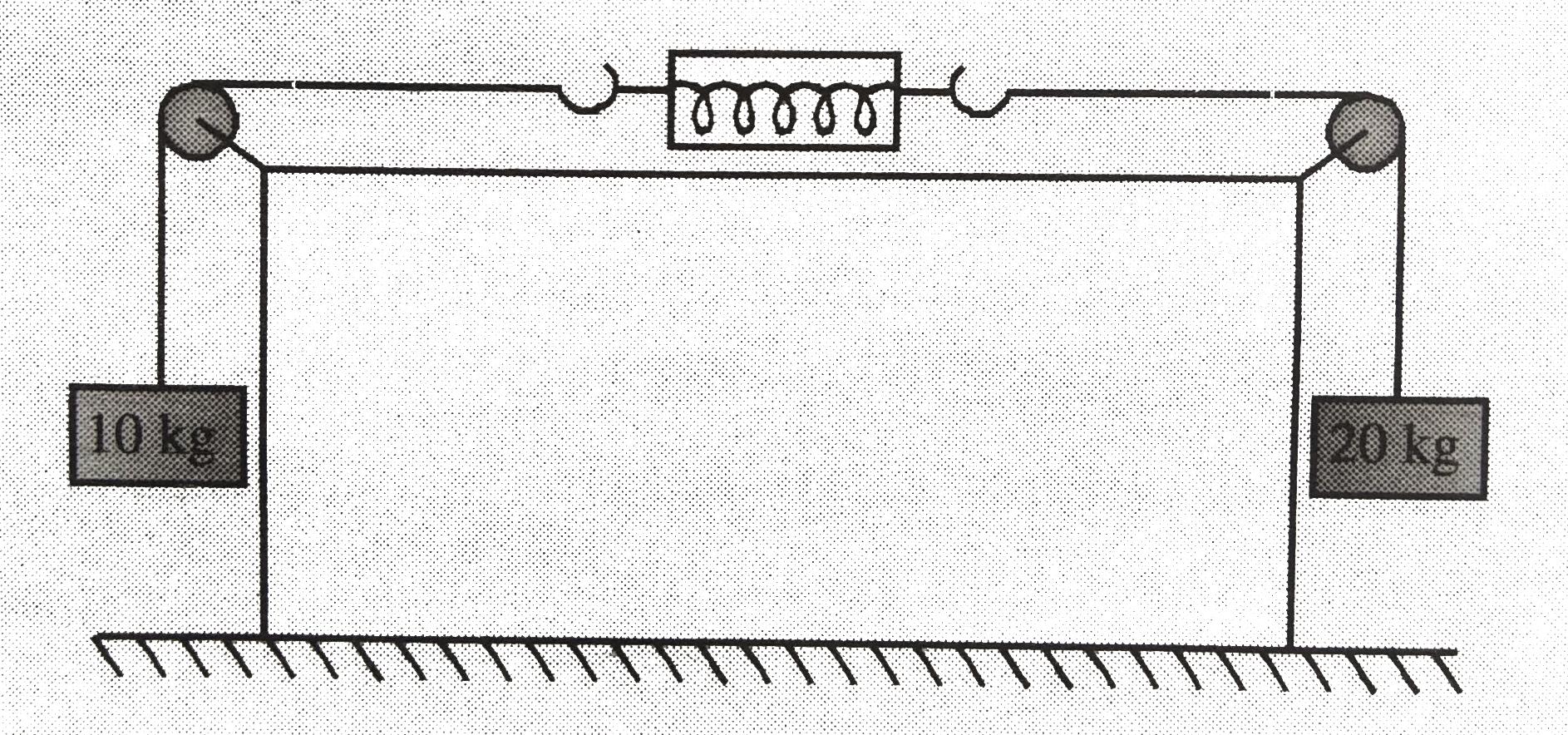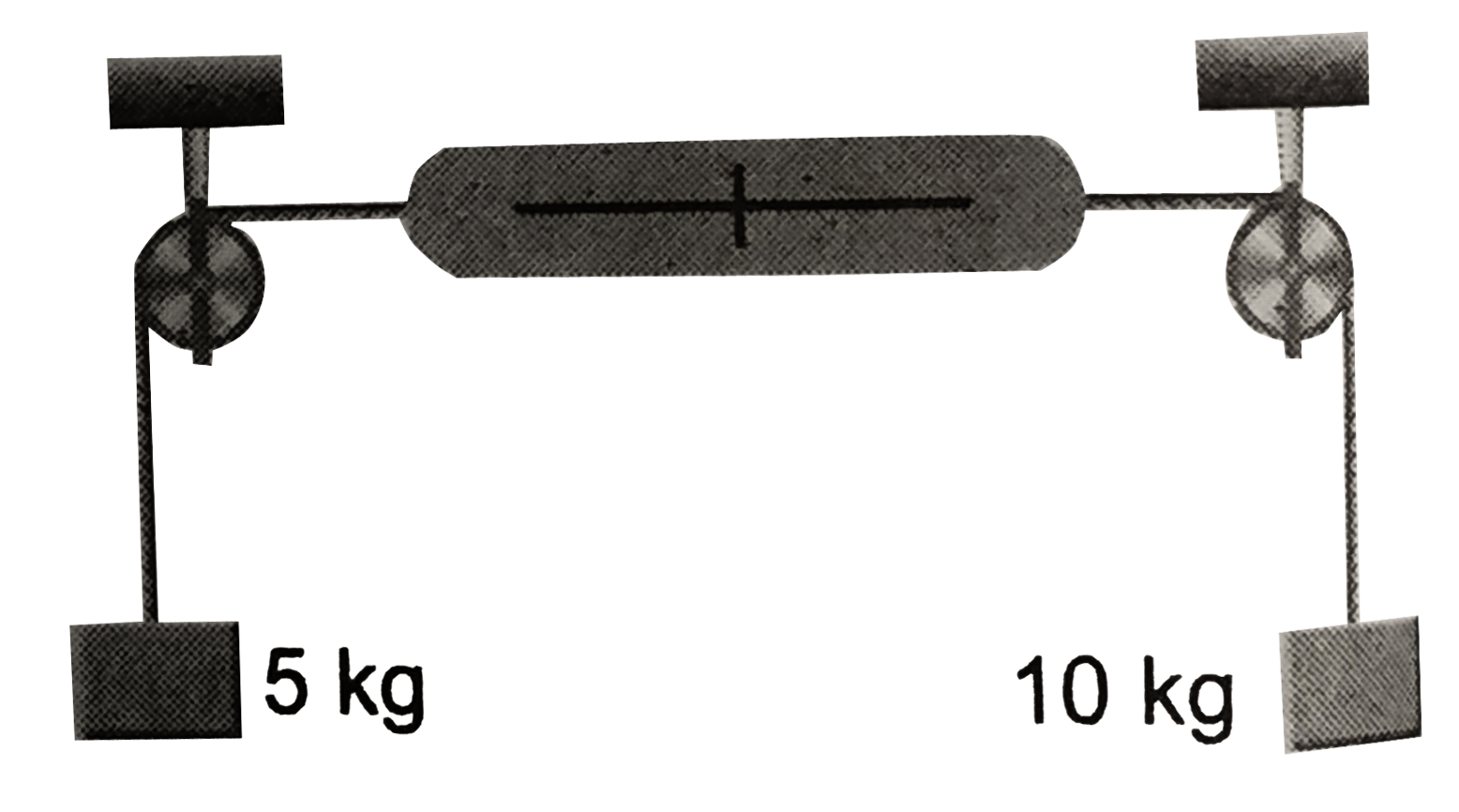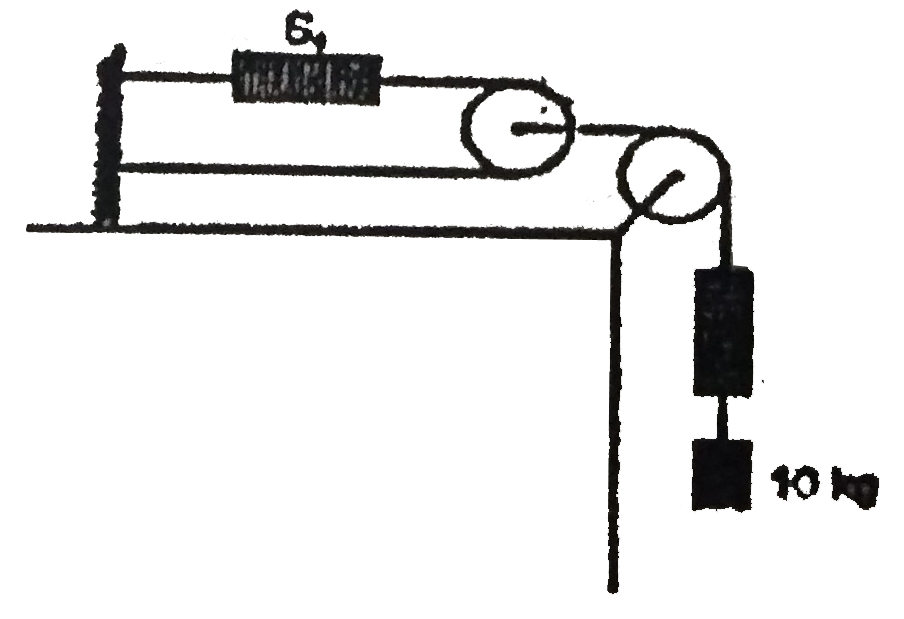On the pan of a spring balance , is placed a beaker containing water . How will the reading of spring balance change if we dip our finger in this water ?
increase
decrease
remain constant
depend upon the material o beaker
The correct Answer is:A
To solve the problem, we will analyze the situation step by step:
1. Understanding the Initial Setup:
- We have a spring balance with a beaker filled with water on it. The spring balance measures the total weight of the beaker and the water inside it.
2. Dipping the Finger into the Water:
- When we dip our finger into the water, we are displacing some of the water. According to Archimedes' principle, the displaced water exerts an upward buoyant force on the finger.
3. Buoyant Force:
- The buoyant force (FB) acts upwards on the finger. This force is equal to the weight of the water displaced by the submerged part of the finger.
4. Normal Force:
- According to Newton's third law, for every action, there is an equal and opposite reaction. Therefore, the finger experiences a normal force (FN) from the water that is equal in magnitude and opposite in direction to the buoyant force.
5. Effect on the Spring Balance:
- The spring balance measures the total weight acting on it. Initially, it measures the weight of the beaker and the water. When the finger is dipped into the water, the buoyant force acting on the finger results in an increase in the normal force acting on the water, which in turn increases the total weight acting on the spring balance.
6. Conclusion:
- As a result, the reading of the spring balance will increase when the finger is dipped into the water.
Final Answer:
The reading of the spring balance will increase when you dip your finger in the water.
---
- We have a spring balance with a beaker filled with water on it. The spring balance measures the total weight of the beaker and the water inside it.
- When we dip our finger into the water, we are displacing some of the water. According to Archimedes' principle, the displaced water exerts an upward buoyant force on the finger.
- The buoyant force (FB) acts upwards on the finger. This force is equal to the weight of the water displaced by the submerged part of the finger.
- According to Newton's third law, for every action, there is an equal and opposite reaction. Therefore, the finger experiences a normal force (FN) from the water that is equal in magnitude and opposite in direction to the buoyant force.
- The spring balance measures the total weight acting on it. Initially, it measures the weight of the beaker and the water. When the finger is dipped into the water, the buoyant force acting on the finger results in an increase in the normal force acting on the water, which in turn increases the total weight acting on the spring balance.
- As a result, the reading of the spring balance will increase when the finger is dipped into the water.
The reading of the spring balance will increase when you dip your finger in the water.
Topper's Solved these Questions
- RACEBOOK - ALLENCHAPTER - RACEEXERCISE - Basic Maths (FRICTION)
14 Videos
- RACEBOOK - ALLENCHAPTER - RACEEXERCISE - Basic Maths (WORK POWER & ENERGY)
34 Videos
- RACEBOOK - ALLENCHAPTER - RACEEXERCISE - Basic Maths (KINEMATICS)
59 Videos
- NEWTONS LAWS OF MOTIONBOOK - ALLENCHAPTER - NEWTONS LAWS OF MOTIONEXERCISE - EXERCISE-III
28 Videos
- SIMPLE HARMONIC MOTIONBOOK - ALLENCHAPTER - SIMPLE HARMONIC MOTIONEXERCISE - Example
1 Videos
Similar Questions
The reading in the spring balance is

View SolutionThe reading in the spring balance is:

View SolutionWhat is the reading of the spring balance in the following device?

View SolutionFor the arrangement shown in the figure, the reading of spring balance is

View SolutionReading of spring balance S1 and S2 (Pulley are ideal)

View SolutionFind the reading of the massless spring balance in the given condition

View SolutionA 20N metal block is suspended by a spring balance. A beaker containing some water is placed on a weighing machine which reads 40N. The spring balance is now lowered so that the block gets immersed in the water. The spring balance now reads 16N. The reading of the weighing machine will be.
View SolutionA spring balance shows wrong reading after using for a long time. Why?
View Solutiona metal solid cylinder tied ot a thread is hanging from the hook of a spring balance. The cylinder is gradually immersed into water contaned in a jar. What changes do you expect in the readings of spring balance? Explain your answer.
View SolutionThe reading of a spring balance when a block is suspended from it in air is 60 N. This reading is changed to 40 N when the block is submerged in water. The relative density of the block is:
View Solution
